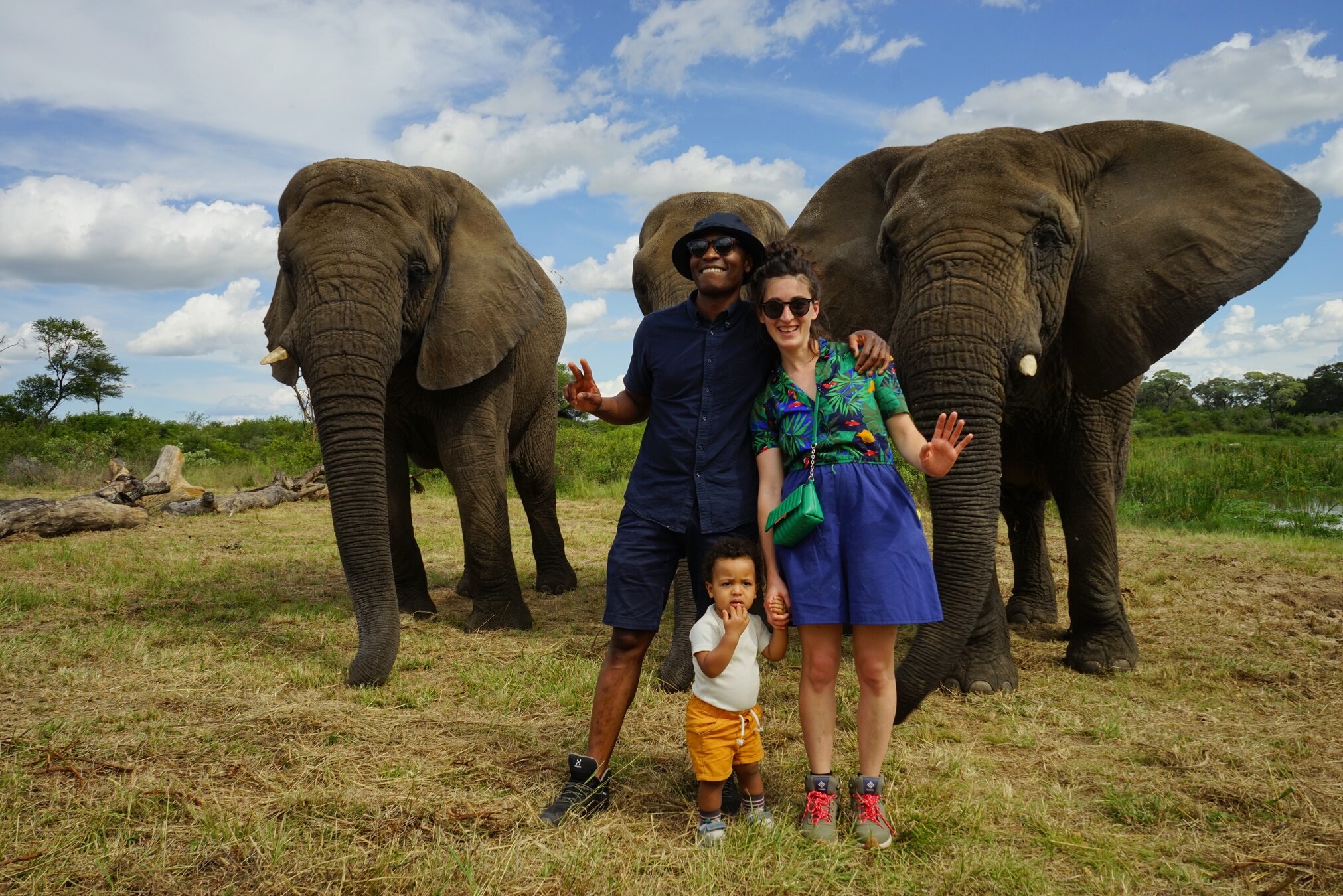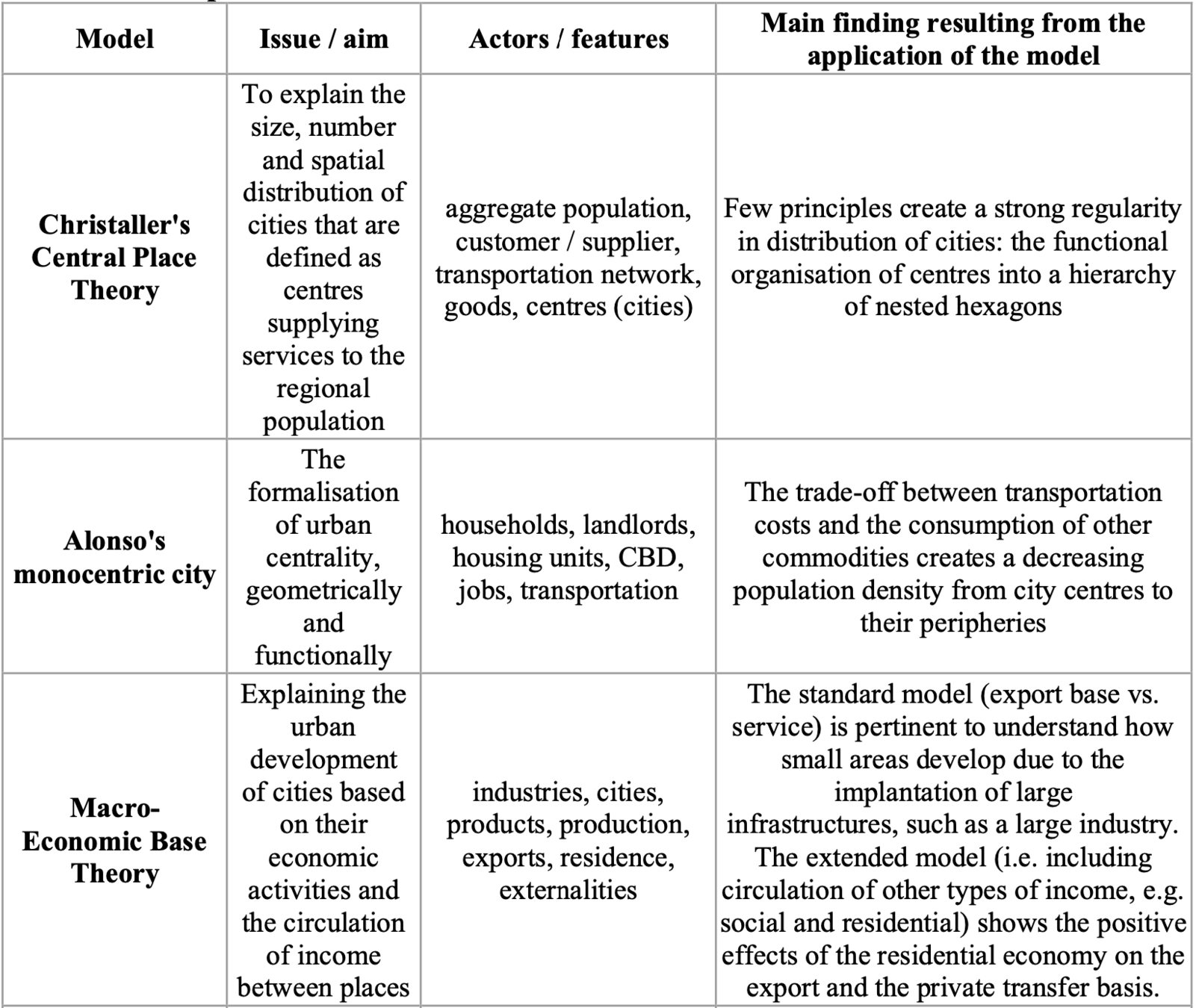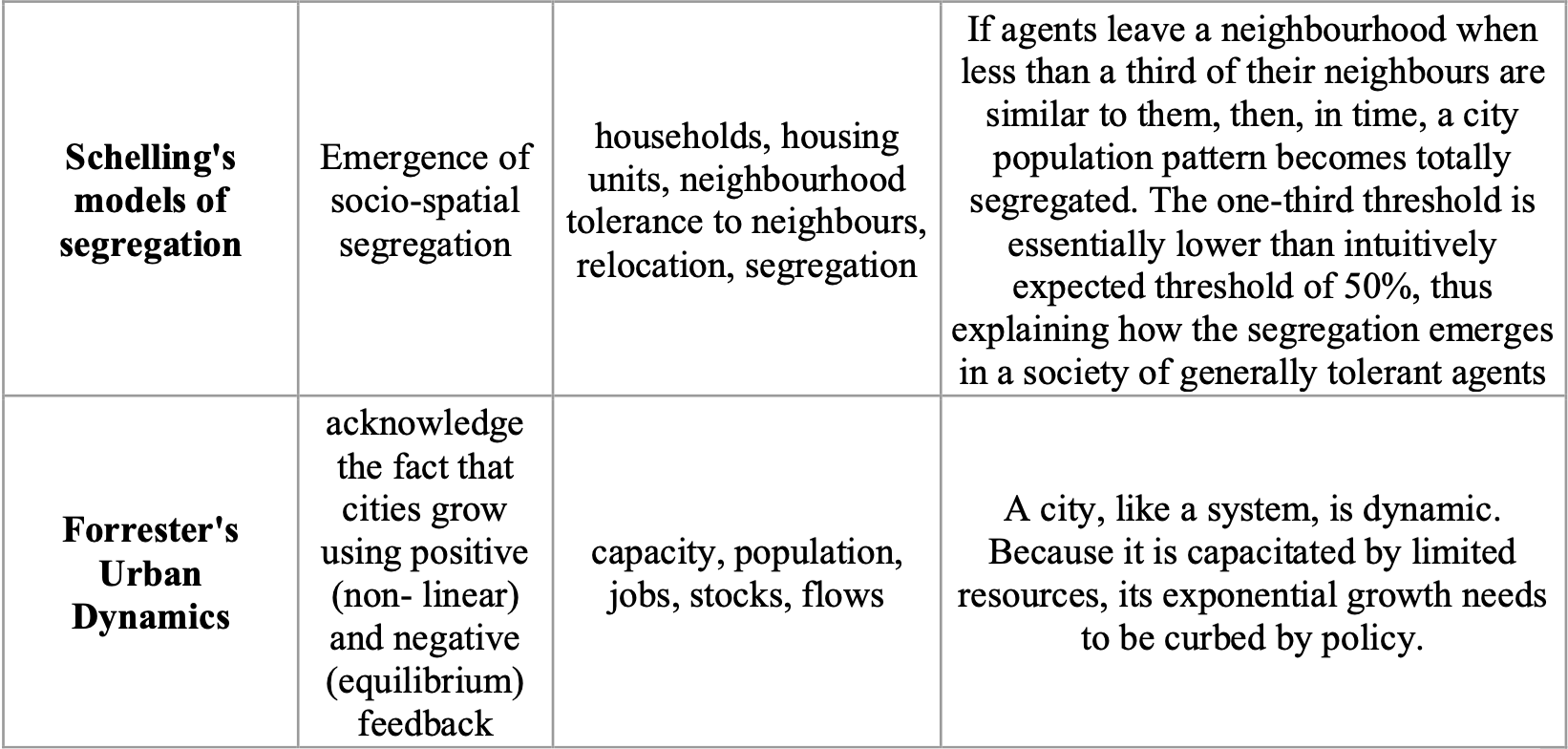Unforeseen Influence.
The role of analytical urban models' circulation on urban studies and policy.
Clémentine Cottineau
+ Michael Batty, Itzhak Benenson, Justin Delloye,
Erez Hatna, Denise Pumain, Somwrita Sarkar,
Cécile Tannier, Rūta Ubarevičienė

Urban Studies Section Meeting, 09/02/2023

Urban models
Simplifications of urban reality, representation of social processes
To help understand, visualise, analyse and plan future cities
Middle ground between general and particular
Useful for comparison and hybridization
>> Prone to circulation
Types of urban models
- theoretical ideas about what cities are and how they function
- normative principles about how we should plan and build cities
- analytical representations to study and simulate the structure and evolution of cities
Urban model circulation
- theoretical ideas about what cities are and how they function
>>> Knowledge on knowledge literature
- normative principles about how we should plan and build cities
>>> Policy transfer & Policy mobilities literature
- analytical representations to study and simulate the structure and evolution of cities
>>> Do they circulate like urban policies?
Research questions
1. What is the importance of contingent elements of context on the design and circulation of analytical urban models?
2. What are the (unforeseen) consequences of urban models' im/mobility on our understanding of cities?
3. What happens to analytical urban models and their reception during their circulation across geographical and disciplinary boundaries?
Literature
Policy Transfer (political science)
> e.g. Dolowitz & March, 2000
- Typically international
- Fixed policy before/after
- Factors of success/failure
- Transfer type
Policy Mobilities (geography)
> e.g. Theodore & Peck, 2010
- Typically inter-city / global-local
- Policy as assemblages changing during circulation
- Focus on actors of circulation
- Mobility / immobility / return, etc.
Relevance for analytical urban models
1. Because urban models circulation reflects the embeddedness of actors in power relations rather than rational choice
-
Difference in resources, capital, influence and legitimacy to spread the model and convince various audiences
-
Inertia of "classic" model becoming "off-the-shelf" solutions
Relevance for analytical urban models
2. Because representations of cities are situated and linked to particular contexts and individual agents of circulation
-
Influence of particular context on model content
-
Ethnographic methods of following to understand them
Relevance for analytical urban models
3. Because models of cities, just like urban policies, are assemblages which change in content and interpretation as they circulation
-
Socio-materiality of urban models (what they are made of)
-
Path-dependency of what circulates and how it is remembered
Data & Methods
Reflexive method to follow analytical models' circulation:
-
Choose 6 classical models
-
Define 4 comparative categories of analysis
-
Invite scholars related to the models to present their circulation according to the comparative categories of analysis
-
Set up seminar series and digital legacy (recorded videos + edited podcast) to collect information (data)
-
Analyse and compare models in scientific article
Seminar schedule

Selecting "data"
Criteria for choose models and presenters:
-
Models should reflect the diversity of urban modelling
-
Models should reflect the diversity of modelling formalisms
-
Models should be "classics", i.e. having circulated widely
-
Presenters should have diverse sources of academic legitimacy (having created the model, reviewed it, developed it or taught it)
Selected models

Selecting "categories"
In line with following and situation analysis methods (McCann & Ward, 2012), the categories chosen are:
-
The model (aim, goal, components, mechanisms)
-
The biography (of creator, model circulation in geographical and academic space)
-
Influence on urban studies (through replication, development, adaptation, ideas, critique)
-
Influence on urban policy (through application to existing cities)
Seminar legacy



Podcast
Videos
Manuscript in writing...
Results
Comparative results:
-
along 4 categories of analysis (model, biography, urban studies, policy)
-
with a particular focus on 2 models for each category
1. The Models

1. The Models



1. Focus
-
Monocentric city model. Deductive model based on 13 assumptions crucial to understand that function centrality is assumed, morphological is derived in Alonso's model.
-
Fractals. Self similarity, fractal objects and dimensions, and how fractal generators can simulate urban-like morphologies.
Heterogeneous nature and materiality of models:
> monocentric model as unique/formal source (Alonso's 1964 book from PhD dissertation)
> factal models as "assemblages" (ideas, measurement protocols, etc.)
2. The Biographies
| Models | Creation context | Reception | Circulation |
|---|---|---|---|
| CPT | Christaller's thesis 1932 | critical in 1930s Germany because too theoretical | through IGU, quant turn & English translation (66) |
| Alonso | Alonso's thesis 1964 | Muth (1969), Mills (1970) and further increments | New Urban Economics |
| Economic Base Theory | Early 20th century. Hoyt or Sombart | Positive, with challenge from input-output model | fast adoption with criticisms, re-evaluation and model competition |
| Fractal urban models | Batty/Longley, Frank-hauser, White/ Engelen, 1990s | aesthetic fascination | numeric application in quantitative geo and statistical physics |
| Schelling | Sakoda 1949 / Schelling 1970 | Warm acceptance in simulation community, scepticism in sociology | Through Schelling's reputation as strategist |
| Forrester | 1971 book, MIT | "out of the blue" | Club of Rome + reputation |
2. Focus
-
Central Place Theory. Influence of WWII and Christaller's political affiliations on model reception, but also momentum from quantitative geography and translation into English.
-
Urban dynamics. Importance of Forrester's academic position at MIT (after working on computer projects for the military), and later Club of Rome. Isolated in urban modelling but fresh approach from electrical engineering and problem oriented > new approach
Heterogeneous source of modelling choices and circulation:
> engineering aspect of Urban Dynamics because of Forrester's educ.
> graphical aspect of CPT to enhance its circulation
3. Influence urban studies
| Models | Relays | Evolution | Transfer/mobility |
|---|---|---|---|
| Christaller | Regional science pioneers + Baskin | from regional planning to baseline & networks | Transfer |
| Alonso | New Urban Economics | from housing market (eco) to density profile (geo) | Transfer |
| Economic Base Theory | Isard, Tiebout, Ponsard, Davezies | From export oriented to residential development | Mobility |
| Fractals | Frankhauser, Batty | description to generation | Transfer |
| Schelling | Benenson&Hatna, Fossett, Kirman, Banos | abstract to empirical city | Mobility |
| Forrester | LUTI modellers | application to dynamics | Transfer |
3. Influence urban studies
-
Economic Base Theory. Story of a model with unclear origin but history of adoptions/adaptations by multiple authors. Even to the point where model adapted to reach opposite conclusions
-
Schelling. Simple model for simple result. Many adaptations show that qualitative behaviour of the model is very robust.
Opportunity of model influence in urban studies:
> memorable qualitative result mark how urban scholars think about cities
> versatile tool to analyse scenarios quantitatively.
4. Influence urban policy
| Models | Urban policy use | Applications | Recognition |
|---|---|---|---|
| Christaller | plan location + size of urban centres | Dutch polders, Germany, Poland, Israel, China | Implicit |
| Alonso | effect of commuting costs on sprawl | LUTI models | Implicit |
| Economic Base Theory | Design export support policy or infrastructure investment | Multiplier effect of export investment on employment | Explicit |
| Fractals urban models | Aim at the creation of fractal forms because of processes, behaviours and practices that this shape allows to optimize | Vienna, India, China, Besançon & Paris | Explicit |
| Schelling | Housing policy | Singapore | Implicit |
| Forrester | Limit growth of capacitated system | / | / |
4. Influence urban policy
Influence of models analysed generally limited, and the more direct the applications the less favourable its implementations seem to be evaluated (Andrews, 1953 about Macro-economic base theory)
Discussion
Contingent factors of model wide mobilities:
-
Creator's language & translation hurdles (partial-incomplete & partial-ideological)
-
Geographical/institutional inequality in circulation power (access to time, budget, media, translation, cultural capital etc.)
-
Disciplinary origin and corresponding legitimacy + audience
-
Gender power imbalance in academia
-
Institutional labelling (policy mobility) > Path dependency (analytical urban models)
Discussion
Essential factors of model mobility:
-
Model's simplicity & clearly defined issue
-
Transparency of key hypothesis
-
Transportability of model (i.e. relevance and applicability to other case studies, sites, issues & disciplines)
-
Formal presentation (graphical, mathematical) can work both ways.
Conclusion
Analytical urban models' content and circulation is contingent on their creation and reception context. Need to travel with their metadata!
Need to question contingent elements and path-dependency influence in model circulation to keep essential components and adapt them to new uses
Metadata and context information = crucial to keep models and model results meaningful and useful as building blocks.
Unforeseen Influence
By Clémentine Cottineau
Unforeseen Influence
- 665



